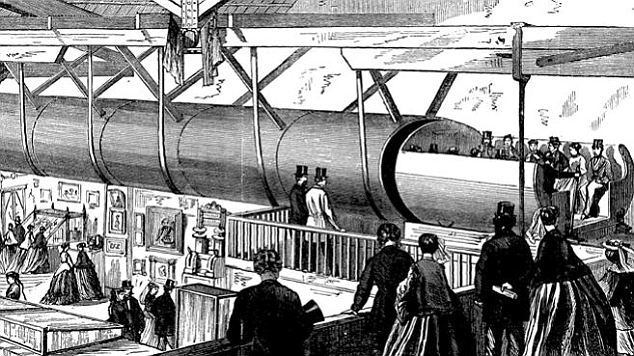It’s the fifth anniversary of Kevin Kelly’s What Technology Wants, and it’s clearly a classic. The author probably would have gotten less grief over the book if he had titled it What Technology Can Do For Us Humans, but that would not have only been unwieldy, it would have been untrue.
In the passage below, Kelly compares the growth of a city–a technology in and of itself–with the development of other technologies, how they start in germinal form, becoming denser and richer as more brains join them. It’s the same for Manhattan and the microchip.
Of course, insta-cities in China and elsewhere are trying to flout this rule. Will any of them become great metropolises? Are they examples of a new technology or just mistakes doomed to failure?
The excerpt:
Every beautiful city begins as a slum. First it’s a seasonal camp, with all the freewheeling makeshift expediency. Creature comforts are scarce, squalor the norm. Hunters, scouts, traders, pioneers find a good place to stay for the night or two, and if their camp is deemed a desirable spot, it grows into an untidy village or uncomfortable fort or dismal official outpost with permanent buildings surrounded by temporary huts. If the location of the village favors growth, concentric rings of squatters aggregate until the village chaotically swells to a town. When a town prospers it acquires a center – civic or religious – and the edges of the city continue to expand in unplanned, ungovernable messiness. It doesn’t in what century or in which country; the teeming fringes of a city will shock and disturb the established residents. The eternal disdain for newcomers is as old as the first city. Romans complained of the tenements, shacks and huts at the edges of their town, which “were putrid, sodden and sagging.” Every so often Roman soldiers would raze a settlement of squatters, only to find it rebuilt or moved within weeks.
Babylon, London, and New York all had seamy ghettos of unwanted settlers erecting shoddy shelters with inadequate hygiene and engaging in dodgy dealings. Historian Bronislaw Geremek states that “slums constituted a large part of the urban landscape” of Paris in the Middle Ages. Even by the 1780s, when Paris was at is peak, nearly 20% of its residents did not have a “fixed abode” — that is they lived in shacks. In a familiar complaint about medieval French cities, a gentleman from that time noted: “Several families inhabit one house. A weaver’s family may be crowded into a single room, where they huddle around a fireplace.” That refrain is repeated throughout history. Manhattan was home to 20,000 squatters in self-made housing. Slab City alone, in Brooklyn (named after the use of planks stolen from lumber mills), contained 10,000 residents in its slum at its peak. In the New York slums “nine out of ten of the shanties have only one room, which does not average over twelve feet square, and this serves all the purposes of the family.”
San Francisco was built by squatters. As Rob Neuwirth recounts in his wonderful book Shadow Cities, one survey in 1855 estimated that “95 percent of the property holders in [San Francisco] city would not be able to produce a bona fide legal title to their land.” Squatters were everywhere, in the marshes, sand dunes, military bases. One eyewitness said, “Where there was a vacant piece of ground one day, the next saw it covered with half a dozen tents or shanties.” Philadelphia was largely settled by what local papers called “squatlers.” As late as 1940, one in five citizens in Shanghai was a squatter. Those one million squatters stayed and kept upgrading their slum so that within one generation their shantytown became one of the first twenty-first-century cities.
That’s how it works. This is how all technology works. A gadget begins as a junky prototype and then progresses to something that barely works. The ad hoc shelters in slums are upgraded over time, infrastructure is extended, and eventually makeshift services become official. What was once the home of poor hustlers becomes, over the span of generations, the home of rich hustlers. Propagating slums is what cities do, and living in slums is how cities grow. The majority of neighborhoods in almost every modern city are merely successful former slums. The squatter cities of today will become the blue-blood neighborhoods of tomorrow. This is already happening in Rio and Mumbai today.•
Tags: Kevin Kelly

